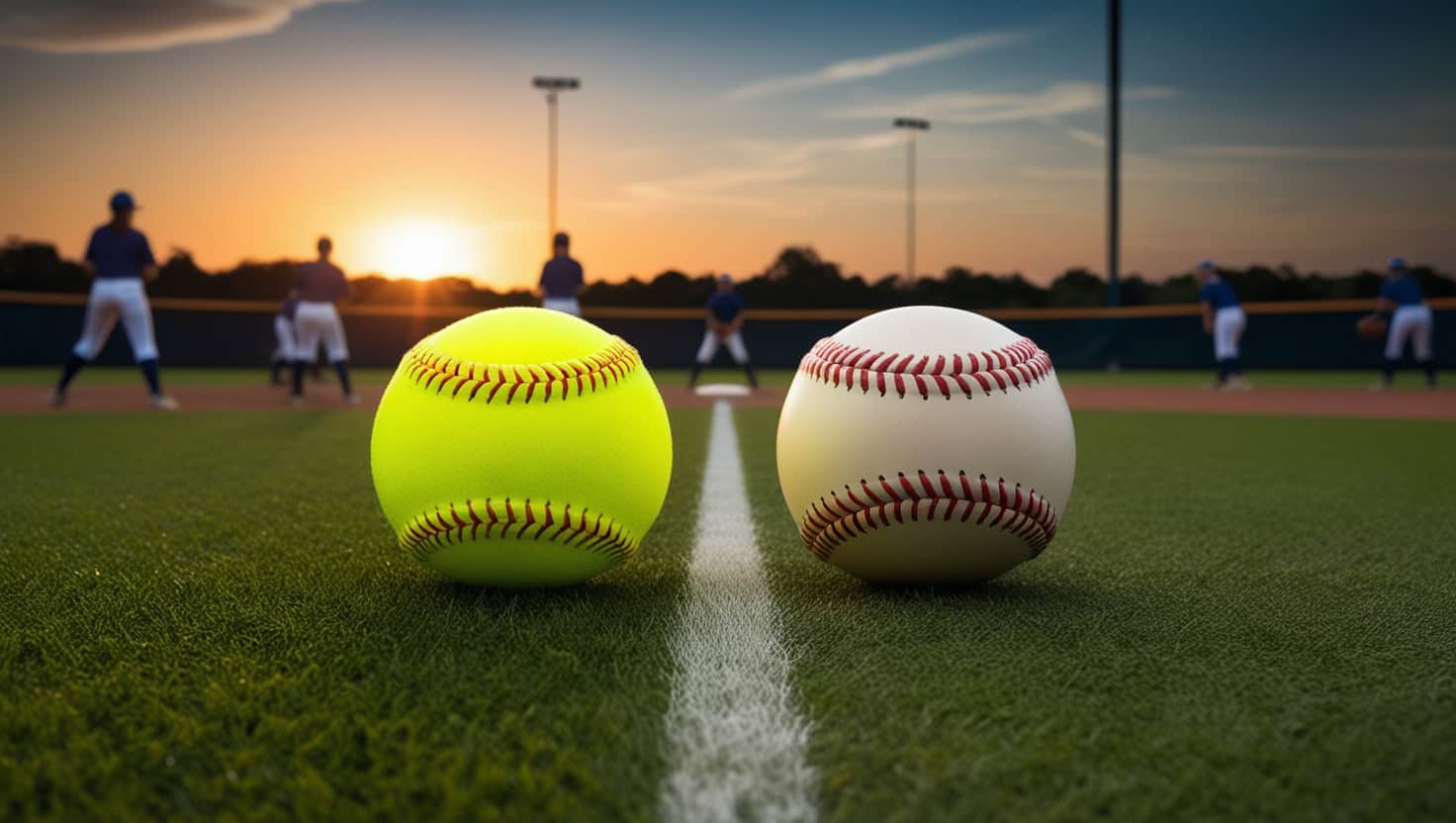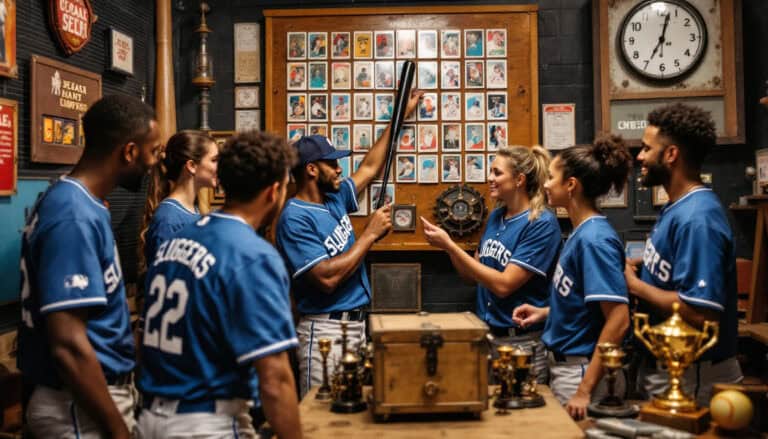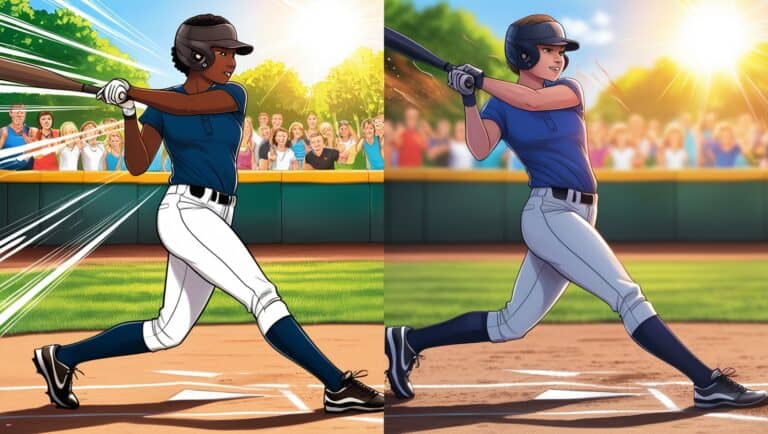High-Visibility vs Standard Softballs: Which Dominates in 2025?

Ever stepped up to bat and struggled to see the ball coming your way? You’re not alone! Lots of softball players report difficulty tracking the ball in certain lighting conditions. That’s where the debate of high-visibility vs standard softballs comes into play. Whether you’re a seasoned pro or a weekend warrior, choosing the right ball can make all the difference in your game. Let’s uncover which softball option might be your secret weapon on the field!
Understanding High-Visibility Softballs
When I first laid eyes on a high-visibility softball, I thought someone had snuck a neon tennis ball onto the field! But boy, was I in for a surprise. These babies are game-changers, literally. High-visibility softballs are designed to stand out like a sore thumb, but in the best way possible.
The key features? Well, for starters, they’re usually decked out in eye-popping colors like fluorescent yellow. It’s like they’re screaming, “Hey, look at me!” And trust me, you can’t miss ’em. The materials used in making these balls are pretty similar to standard softballs, but with a twist. Manufacturers use special fluorescent dyes that make the balls pop under various lighting conditions.
What about lighting? That’s where these high-visibility beauties really shine. Whether you’re playing under the scorching sun or in the fading twilight, these balls are easier to spot than a clown at a funeral. I remember this one time during a late afternoon game, the sun was setting, and it was getting harder to see by the minute. But that bright yellow softball? It was like a comet in the night sky flying through the air.
Now, let’s talk performance and safety. High-visibility softballs can be a real game-changer for players. They’re easier to track in the air, which means fewer missed catches and better hitting accuracy. And let’s face it, when you can see the ball better, you’re less likely to take one to the face. Safety first, my friends!
The Classic Appeal of Standard Softballs
Now, let’s give some love to the OG – the standard softball. These classic beauties have been around since forever, and there’s a reason they’re still kicking. Traditional softballs are typically white, with that iconic red stitching that just screams “America’s pastime.”
The materials and construction of standard softballs are pretty fascinating. They’ve got a core made of either cork or polyurethane, wrapped in layers of yarn and covered with leather or synthetic material. It’s like a little ball-shaped onion, but way less tear-inducing (unless you get hit by one, that is!).
Standard softballs really come into their own in certain situations. On a clear, sunny day with perfect visibility, these classics perform just as well as their flashy high-visibility cousins. There’s also something nostalgic about playing with the same type of ball you grew up with.
Performance Comparison: High-Visibility vs Standard Softballs
Let’s get down to the nitty-gritty: high-visibility vs standard softballs. How do they really stack up? Well, I’ve played with both, and it can be a whole different ballgame depending on the conditions.
In terms of visibility, high-visibility softballs have a clear edge when the lighting gets tricky. Cloudy days, early mornings, or late evenings – that’s when these neon wonders really earn their keep. Standard softballs, on the other hand, can sometimes blend into the sky, making them harder to track.
When it comes to hitting and fielding accuracy, it’s a bit of a toss-up (softball pun intended). Some players swear they can hit high-visibility softballs better because they can see them coming earlier. Others claim the bright color is distracting. Personally, I found that after a short adjustment period, my hitting improved with high-visibility balls, especially in less-than-ideal lighting.
Durability-wise, there isn’t a huge difference between high-visibility and standard softballs. Both types can take a beating and keep on ticking. However, I’ve noticed that the bright colors on high-visibility softballs can fade over time, especially if they’re left out in the sun too long. Standard softballs might show dirt more, but they tend to keep their original appearance longer.
As for pitching, some pitchers claim that high-visibility softballs affect their ball movement. The theory is that the brighter color makes the spin more noticeable, potentially giving away pitch type. But in my experience, if you’re a good pitcher, you’re gonna fool batters regardless of the ball color.
Safety Considerations in Softball Equipment Choice
Let’s talk safety, ’cause nobody wants to end up with a shiner or a broken nose. High-visibility softballs have some serious potential when it comes to injury prevention. The simple fact is, when you can see the ball better, you’re more likely to catch it or dodge it if needed.
I remember this one time, playing in a twilight game with standard softballs. I was in the outfield, and I lost sight of the ball for a split second. Next thing I knew, I was running away covering my head with my hands and glove hoping to not get knocked out! With high-visibility softballs, that kinda thing is less likely to happen.
Reaction time is another big factor. When you can pick up the ball quicker, you’ve got more time to react. It’s not a huge difference, but in a sport where split seconds matter, every little bit helps. The extra split second might be enough to get that shoe-string catch and save your team a few runs.
When it comes to official regulations and tournament requirements, things can get a bit tricky. Some leagues and tournaments have specific rules about ball color and visibility. It’s always a good idea to check the rulebook before showing up with a bag full of neon yellow balls. Adapting to different ball types is part of being a well-rounded player.
Choosing the Right Softball for Your Needs
Alright, so you’re standing in the sporting goods store, staring at a wall of softballs. High-visibility vs standard softballs – which way do you go? Well, it depends on a few things.
First off, think about when and where you’ll be playing most often. If you’re a weekend warrior who likes those early morning or late evening games, high-visibility might be your best bet. But if you’re mostly playing under the midday sun, standard softballs could work just fine.
For different skill levels and age groups, I usually recommend high-visibility softballs for beginners and younger players. They’re easier to track, which can help build confidence. But for more experienced players, it really comes down to personal preference.
Cost-wise, high-visibility softballs tend to be a smidge more expensive than standard ones. But we’re talking a difference of a few bucks per ball, so it’s not gonna break the bank either way.
Here’s a pro tip: use both types in your training. Switching between high-visibility and standard softballs can help improve your visual tracking skills and make you a more adaptable player. Plus, it keeps things interesting during practice.
At the end of the day, whether you go for high-visibility or standard softballs, the most important thing is getting out there and playing. Both types have their strengths, and the best choice is the one that helps you enjoy the game more. So grab a ball – any ball – and play ball!
As we’ve seen, the choice between high-visibility vs standard softballs isn’t just about personal preference – it can significantly impact your game! Whether you’re looking to enhance your performance in low-light conditions or stick with the classic feel of a traditional softball, both options have their place on the diamond. Remember, the best choice for you depends on your playing conditions, skill level, and specific needs. Why not give both a try during your next practice session? You might just discover a game-changing difference in your play. Batter up, and may the best ball win!
Craving more softball wisdom? Unlock game-changing tips below!






